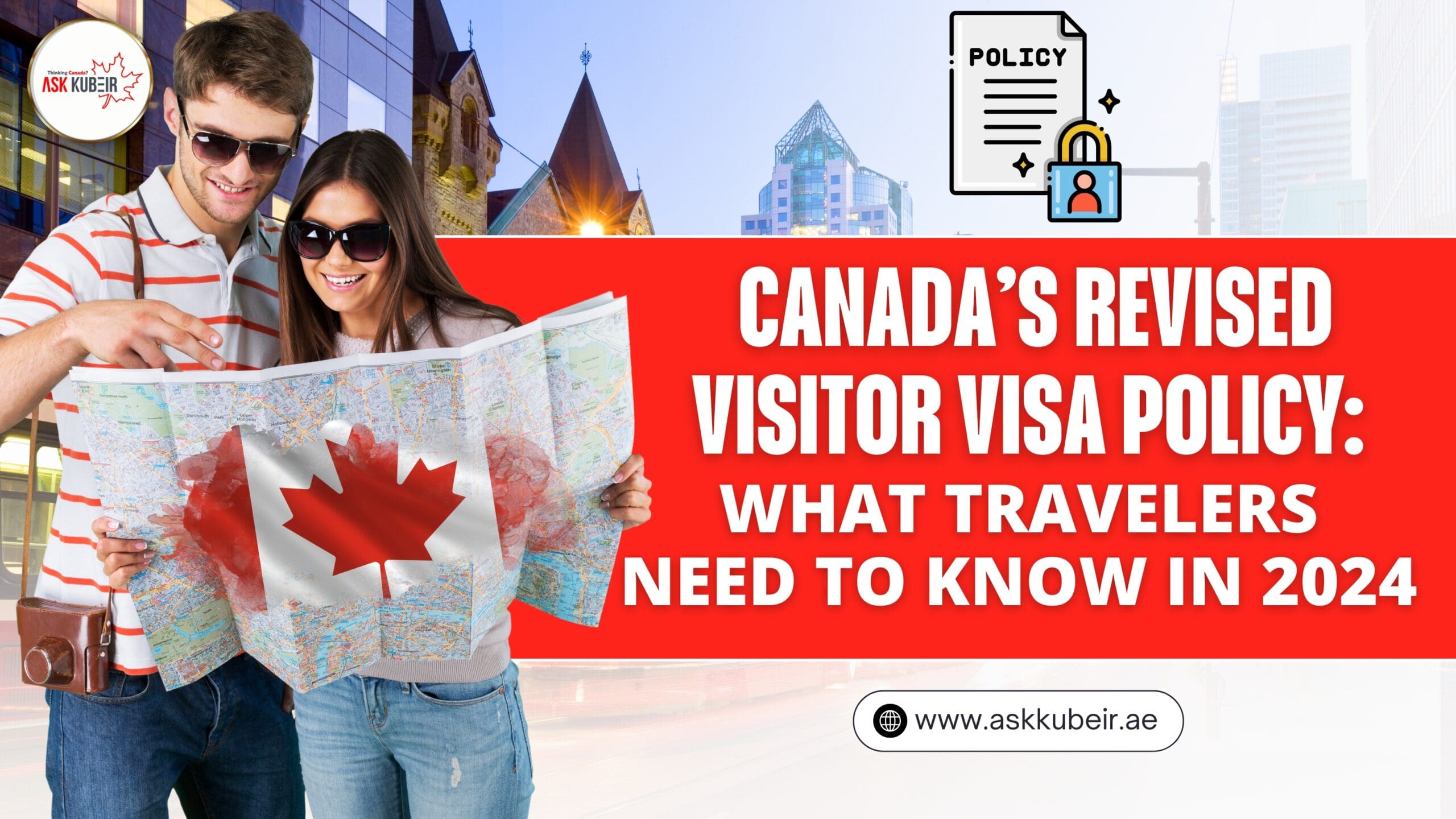
In a notable shift, Canada has revised its visitor visa policy, transitioning away from long-term, multiple-entry tourist visas with a validity of up to ten years. This change reflects a more tailored approach to entry permissions, with visa validity and type determined case-by-case by immigration officers. Below, we dive into the specifics of this revised policy, its implications for travelers, and practical tips for those planning to visit Canada under the new rules.
1. Key Changes in Canada’s Visitor Visa Policy
Canada’s updated policy represents a fundamental shift in how visas are issued and managed:
- End of 10-Year Multiple-Entry Visa: The option for a multiple-entry tourist visa with a ten-year validity period has been discontinued. Previously, travelers with such visas could enter Canada multiple times without reapplying, as long as the visa remained valid. Now, officers will determine each case individually, deciding on single or multiple-entry status and duration.
- Immigration Officers’ Discretion: Immigration officers now have greater flexibility to determine the visa type and validity based on applicants’ profiles and Canada’s evolving immigration needs. This approach aims to better align visa issuance with Canada’s resources and housing market.
- Increased Focus on Visa Validity Matching Profile: The shift towards short-term visas reflects Canada’s intent to closely monitor and control the flow of temporary visitors. Longer stays and repeat entries may now require separate applications, adding time and cost for visitors.
2. Implications of the Revised Visa Policy for Travelers
Travelers planning a visit to Canada should be aware of several key changes that could impact both the logistics and cost of travel.
2.1 More Selective Entry Criteria
The end of the ten-year multiple-entry visa means that applicants might face stricter scrutiny regarding eligibility for multiple entries. Immigration officers will weigh the applicant’s profile, purpose of visit, and the likelihood of compliance with departure requirements.
2.2 Shorter Visa Duration and Increased Cost
For those planning longer stays or multiple entries, the updated policy may require more frequent visa applications. This change translates to:
- Increased Visa Application Costs: Travelers could face more expenses as they need to apply for multiple visas over time instead of a single extended visa.
- Time for Visa Processing: Reapplying for visas will require travelers to account for visa processing times, which could delay travel plans.
2.3 Compliance and Consequences of Overstay
Canada’s government plans to enforce stricter deportation measures for those who overstay their visas. Visitors must ensure they comply with their visa terms to avoid legal consequences.
3. Canada’s Motivation Behind the Policy Change
The revised visa policy is part of Canada’s larger strategy to balance its renowned open-door immigration approach with pressing domestic challenges, primarily related to:
- Housing Shortages: Increased immigration has put significant pressure on housing availability, especially in major cities.
- Rising Cost of Living: With inflation affecting housing, food, and utilities, Canada is carefully managing temporary and permanent immigration to avoid exacerbating these issues.
This policy enables Canada to better manage the inflow of temporary visitors, aligning with its current socio-economic climate and immigration goals.
4. Practical Considerations for Prospective Visitors
4.1 Apply Early and Prepare for Potential Delays
With officers now assessing visas on an individual basis, processing times could vary. Applicants should:
- Apply well in advance of planned travel to avoid unexpected delays.
- Consider single-entry options if only planning a short stay, as these may be granted more readily.
4.2 Budget for Additional Visa Applications
Travelers with plans for multiple visits may need to adjust budgets to account for possible reapplications. These costs may include:
- Visa application fees for each entry if reapplications are necessary.
- Costs associated with document preparation and travel insurance, which may be required for entry.
4.3 Monitor Policy Updates
Canada’s immigration policy is expected to evolve further in response to economic and housing factors. Travelers should regularly review the latest updates on official Canadian immigration channels.
5. Advantages and Disadvantages of the Revised Visa Policy
| Advantages | Disadvantages |
|---|---|
| Better Allocation of Resources: Reduces administrative strain by issuing visas based on need. | Higher Costs for Visitors: Frequent reapplications increase financial burden on travelers. |
| Aligns with Economic Policy: Supports Canada’s housing and economic stability objectives. | Shorter Visa Validity: Limits flexibility for frequent visitors and family members. |
| Enhanced Security: Provides more oversight of visitors and compliance with exit requirements. | Longer Processing Times: Personalized review may lead to delays in visa issuance. |
6. How Travelers Can Maximize Their Visa Success
Given the policy shift, applicants should take a strategic approach to their visa applications to increase their chances of approval.
- Accurately Present Purpose of Visit: Clearly communicate the purpose of the visit, as officers may be more likely to approve visas aligned with temporary needs.
- Prepare Detailed Documentation: Supporting documents, such as proof of return plans and financial stability, can help substantiate the visa request.
- Consider Alternative Travel Plans: For travelers requiring long stays or multiple visits, it may be worthwhile to explore alternative visa types (e.g., work permits, family reunification visas) that could allow for extended stays.
7. Potential Future Changes in Canada’s Visa Policy
As Canada continues to adapt to the economic and housing landscape, further changes to immigration policies may occur, including:
- Additional Restrictions on Temporary Visas: Depending on housing availability, Canada may introduce further limitations on visa durations.
- Increased Stringency in Visa Approvals: Additional requirements could be implemented to ensure that visitors adhere to visa terms.
The Canadian government aims to carefully balance its welcoming immigration policies with the realities of resource limitations, reflecting a prudent approach to managing visitor entry.
| Section | Description |
|---|---|
| Canada’s Visitor Visa Policy | Central topic of the policy change. |
| Single-Entry Visas | Focuses on shorter visa durations and single-entry applications. |
| Multiple-Entry Visas | Discusses the end of long-term, multiple-entry visas. |
| Shorter Duration | Highlights the reduced duration for some visas based on individual assessments. |
| Increased Application Requirements | Emphasizes more stringent visa application processes for multiple entries. |
| Revised Visitor Screening | Describes how visa eligibility is now determined by immigration officers. |
Each section refers to a part of the revised policy that explains key changes for travelers applying for Canadian visitor visas.
Conclusion
Canada’s revised visitor visa policy introduces a more selective and flexible framework, emphasizing short-term entry and compliance with exit requirements. By tailoring entry permissions to applicant profiles, the Canadian government seeks to address domestic challenges while managing the flow of temporary residents. Travelers must now approach their Canadian visa applications with greater preparation and awareness, as multiple entries and long-term stays will require more detailed planning and resources.
Reach out to us at AsKubeir for expert guidance and personalized support. Let us help you turn your career goals into reality and start your new chapter in Canada with confidence!
CONTACT US!
📞 Call us: 04 526 4646
📲 WhatsApp: wa.me/971529693030
🌐 Website: www.askkubeir.ae





